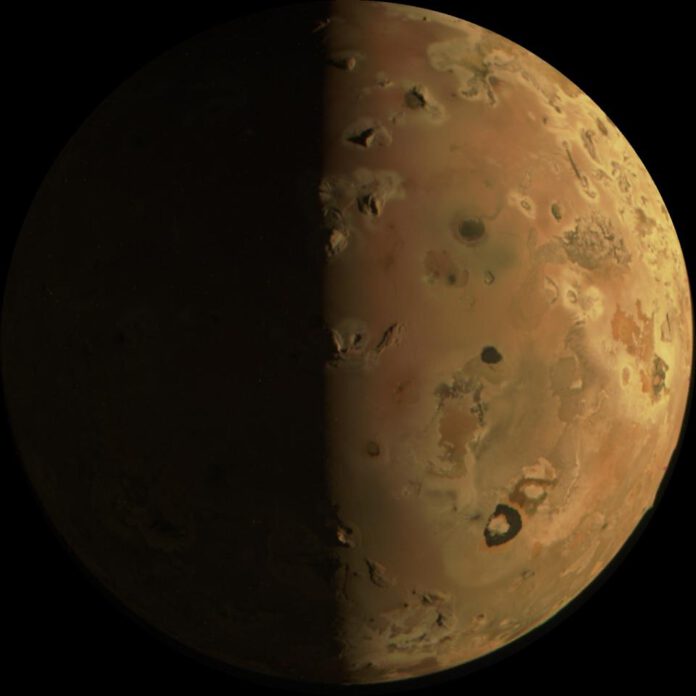
Last Saturday, a NASA space probe made a close flyby to Io, one of the four largest moons of Jupiter. The probe, known as Juno, managed to approach within 1500 kilometers of the moon, which is notorious for its volcanic activity. This resulted in some remarkable images.
NASA often posts raw material first, calling for the public’s assistance in editing the photos. Some have already added color to the images or highlighted certain details, making the photos more beautiful and clear.
Three Onboard Cameras
We previously reported on Juno’s visit to Io, known colloquially as the “pizza moon” due to its volcanic surface. It has more than four hundred volcanoes in all – more than any other celestial body in our solar system. It is the first time in twenty years that a space probe has come so close to the moon’s surface.
The purpose of the mission is to gather information on the nature of the volcanic activity on the moon. For example, is there a magma ocean hidden beneath the surface? And how significant are Jupiter’s tidal forces, which exert great pressure on Io? These questions don’t need to be answered all at once. Juno will return for another close pass of the gas giant’s moon on February 3rd.
The space probe has three cameras onboard: the Jovian Infrared Auroral Mapper (JIRAM), which creates infrared images to measure the heat emitted by volcanoes and craters; the Stellar Reference Unit, delivering pictures of the surface in the highest resolution so far; and finally the JunoCam, which takes color images of visible light.
Visible Wear and Tear
The photos published below were taken by the JunoCam. However, the camera is showing signs of wear. It was thought that due to the high amounts of radiation Juno is exposed to, the probe would have been written off much sooner. But so far, it’s holding up well, including the JunoCam. However, the latest images clearly show that the camera is nearing the end of its operational life. The photos are suffering from a reduction in the camera’s dynamic range and an increase in background noise.
NASA is therefore calling on citizen scientists to find new ways to edit these images “to continue showcasing the beauty and mysteries of Jupiter and its moons”.
As can be seen, they have done an excellent job thus far:











